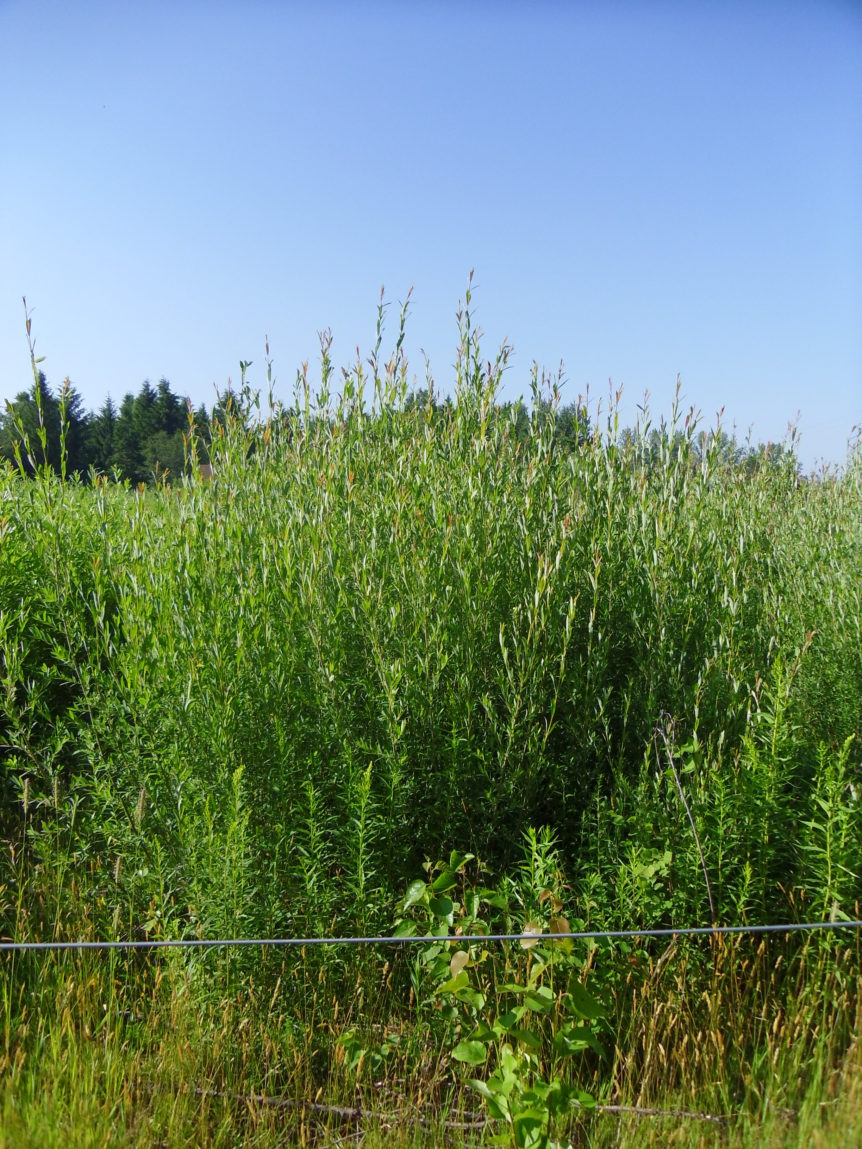by Mikala Parr, Research Assistant
In 2007 a short rotation woody coppice plantation was established by the Canadian Forest Service to assess the potential of fast growing willow and poplar for bioenergy. A section of this plantation was fenced off in 2015. The idea of this project was to determine if willow and poplar regrowth would be an adequate food source for sheep to browse on.
While suitable as short-term forage, the leaves and young stems may not have enough indigestible fibre for optimal rumen health. When the trees were analyzed, Relative Feed Value (RFV) and Relative Forage Quality (RFQ) were taken into account. RFV and RFQ are two different indices that let us compare different forages quickly. RFV is a comparison to full bloom alfalfa, which is 100; other feeds may score higher or lower depending on their ADF and NDF contents, which are estimates of digestibility and dry matter intake. RFQ is a more robust calculation that factors in crude protein and fatty acid contents, as well as fibre.
The RFQ index is an improvement over RFV when someone is buying or selling forages as it can better predict the performance of cattle fed that forage. The RFQ has been created to overcome the weakness that the RFV has, because it is only based on fibre. RFQ has proven to be the more reliable index when looking at feed values. When looking at the nutrient analysis the trees have a very high value for both RFV and RFQ. The chart (below) shows the typical value for alfalfa on both RFV and RFQ for comparison. Note that tree varieties SV1 and SX61 have virtually the same RFV but rather different RFQ values.
Thanks go to Brent Attwell (REGEN Forestry) and Collholm Farm for their contributions to this project. This project was funded by the Ontario Sheep Marketing Agency.
For more information on this project, see:
Sheep Preferences 2015 vs 2016
Nutritional value and integration of hybrid willow and poplar as fodder for sheep: 2015 results


